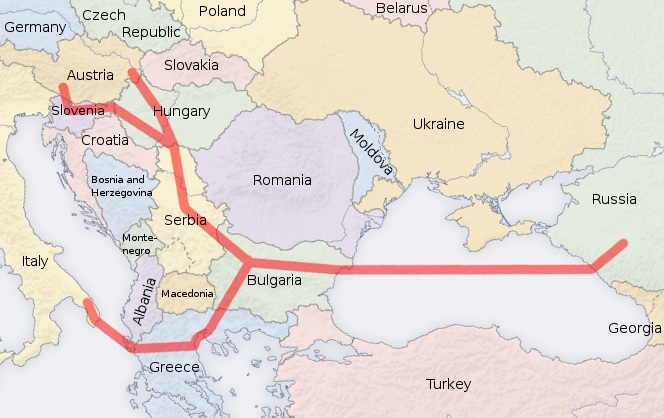News+: The South Stream project
As a flurry of South Stream announcements were made this week, the sheer scale and complexity of the trans-continental gas pipeline project means that exactly what has been agreed with regards to the financing and development remains vague.
In the past week alone, Russian prime minister Vladimir Putin presided over a construction opening ceremony for the US$16.5 billion project, which will flow underneath Turkey's waters in the Black Sea, through Bulgaria and onwards to Serbia, Croatia and Italy to the main European pipeline network (see the first image below for the proposed route). The Turkish government announced that the pipeline will flow - somewhat controversially - through it waters, and Gazprom also said that final investment decisions were in place.
And yet for every communique of progress on the project, there are just as many announcements suggesting that South Stream is nowhere near as advanced as the Russian government would have the rest of the world believe. Gazprom confirmed at the opening ceremony that environmental permits and permissions are not fully in place for the offshore sections of the pipeline, and that work on these sections is unlikely to begin until 2014. Brussels said this week that it was unaware that the project had a confirmed route. "It was never communicated to the (European) Commission that South Stream has a final route," said Marlene Holzner, spokeswoman for Energy Commissioner Guenther Oettinger. "We don't regard this as a final investment decision," she added.
To further complicate matters, South Stream is just one of a number of trans-European gas pipelines currently in development. There is also the Nabucco pipeline (image of the planned route below), which is planned to start in Turkey and run through Bulgaria, Romania and Hungary before ending in Austria, with gas supplies expected to come in the main from Iraq. News on Nabucco has been quiet in recent months, but a final investment decision was expected by the end of 2012. Nabucco is both EU and US-backed, and as a result has inevitably been seen as a political rival to the Russian-state funded South Stream.
Each project is in the development stage. South Stream’s ownership plan is complex, requiring joint ventures to be established between the developer and the governments of each country that it passes through. The pipeline has numerous political ramifications too. It has been diverted away from traditional transit country Ukraine, in what has been viewed by many as an attempt to cut off Russian supply to the country. Putin has long claimed that Ukraine has intentionally diverted gas destined for Europe for its own uses.
The decision to re-route through Turkish territorial waters was a surprise choice: the country has been believed to be keen to cut its current dependence on Russia for energy. Currently, an estimated 71.5 per cent per cent of Turkey’s energy is imported, and these imports are primarily Russian natural gas. The Nabucco project also plans to use Turkey as a conduit to the rest of Europe, but last week the Turkish energy minister Taner Yildiz was keen to stress that Turkey did not view South Stream as a rival to Nabucco. “Although in the short term they might look like rival projects, in the mid and long term, they are not. As Europe needs more natural gas, there will be a need for three or four projects like that. This is why we have a positive approach to South Stream,” said Yıldız.
The current dash for gas - being seen in the US and the UK at least - supports Yildiz's claim that an unrestricted flow of gas is going to be welcome, at least for a while. What isn't flowing so readily is information about when we can expect clarityand concensus - on what is one of the biggest energy deals in the world.
Request a Demo
Interested in IJGlobal? Request a demo to discuss a trial with a member of our team. Talk to the team to explore the value of our asset and transaction databases, our market-leading news, league tables and much more.

